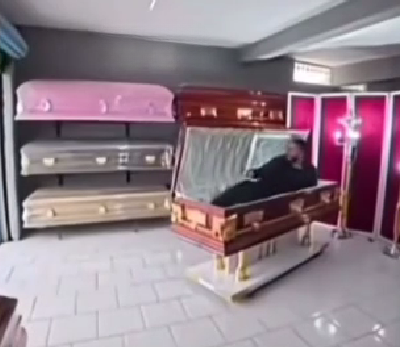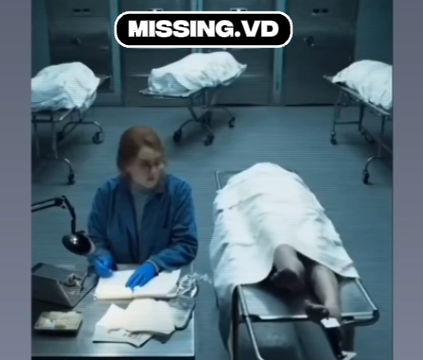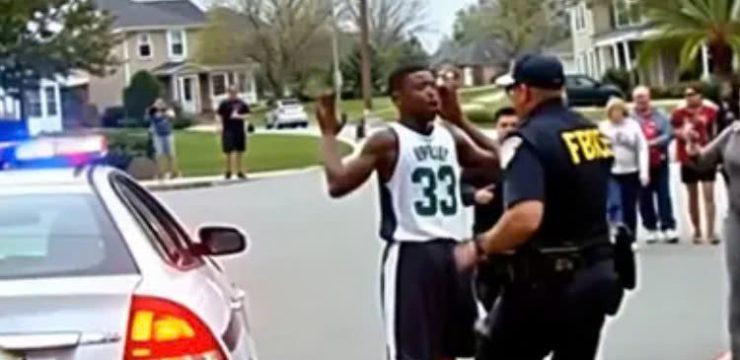In the peaceful suburbs of Cleveland, where life tends to move at a steady, predictable pace, neighbors often exchange friendly waves, and weekend gatherings are filled with laughter and routine fun. Yet one seemingly ordinary night, a group of young friends decided to turn that sense of normalcy upside down with a prank that would not only leave their friend speechless but would also ignite a viral debate across social media. What began as a typical house party—music, laughter, and a few too many drinks—took an unexpected and eerie turn when one man passed out on the couch. While most people might have draped a blanket over him or teased him lightly when he woke, his friends had a much more elaborate plan in mind. They decided to stage a fake funeral, complete with mourners, dimmed lights, and somber music, to make their friend believe he had somehow attended his own memorial service.

The group spent hours transforming the living room into something that looked hauntingly real. They set up candles, placed flowers around a makeshift coffin, and even arranged photo displays as if honoring someone who had passed. Friends dressed in black stood silently around the room, pretending to grieve. Every detail was carefully chosen to heighten the illusion—from the scent of burning incense to the slow, melancholy background music. When their unsuspecting friend finally stirred awake, he opened his eyes to a scene straight out of a nightmare. The first thing he saw was a framed photo of himself surrounded by flowers. For several seconds, he just stared, trying to make sense of what was in front of him. Confusion quickly gave way to fear as he looked around the room, seeing his friends standing solemnly like mourners.
The moment was caught on video, and the reactions that followed were nothing short of cinematic. The man’s eyes widened as he slowly sat up, scanning the space in disbelief. A shaky whisper escaped his lips, asking what was happening. His pulse visibly quickened as the realization—or rather, the illusion—began to sink in. But just as panic was about to take over, the prank was revealed. One of his friends couldn’t contain the laughter anymore, and within seconds, the room erupted into chaos. Laughter replaced silence, and shock turned to relief. The young man, still dazed, eventually joined in, laughing through the adrenaline and confusion.
When the video was uploaded to social media, it spread faster than anyone expected. Within hours, it had millions of views across TikTok, Instagram, and Twitter. Viewers were simultaneously horrified and amused, captivated by the rollercoaster of emotions packed into a few short minutes. The video had all the ingredients of a viral hit—surprise, tension, and a satisfying sense of relief once the truth came out. Psychologists who study viral trends have long noted that successful prank videos often follow this emotional pattern: they start with shock, build suspense, and end with laughter or relief. This emotional sequence triggers empathy, curiosity, and joy—all powerful drivers of online engagement.
However, not everyone saw the humor in it. As the video gained traction, the comment section filled with both admiration and concern. Some viewers praised the creativity and daring nature of the prank, calling it one of the funniest videos of the year. Others, however, were disturbed by its morbid theme. “He could have had a heart attack,” one user wrote. “Pranks should be funny, not terrifying.” Another commenter added, “Faking death crosses the line—it’s emotionally cruel.” This clash of opinions sparked a larger conversation about where to draw the line between harmless fun and emotional harm.
Experts in psychology weighed in, explaining that pranks work because they disrupt expectations and momentarily distort reality. When performed among friends who trust each other, they can even strengthen bonds, creating lasting memories through shared laughter. Yet, when they tread into sensitive territory—like simulating death—they risk triggering anxiety, trauma, or humiliation. In this case, the friends knew their target well and were confident he would find the humor in it. That mutual trust made the difference between a disaster and a laughable memory. Still, many viewers questioned whether the public sharing of such a deeply emotional moment was appropriate.
This incident also reflects a broader trend in online culture: the escalation of pranks in pursuit of virality. Decades ago, pranks were private jokes within small groups. Today, they are global performances designed for millions. Platforms reward sensational content—something that surprises and entertains viewers instantly. As a result, pranksters often push boundaries, creating stunts that blur the lines between humor, shock, and ethical responsibility. Some classic online pranks involve fake celebrity encounters, room makeovers, or filling a friend’s car with balloons. But this “funeral prank” stood out for its theatrical setup and emotional intensity. It wasn’t just a simple joke—it was an entire production designed to mimic a life-or-death experience.
For pranksters and content creators, this viral moment serves as a reminder of key lessons. First, always know your audience. What’s funny to one person might be deeply disturbing to another. Second, safety—both emotional and physical—should always come first. Third, trust is essential; a good prank should end with everyone laughing, not feeling betrayed. And finally, once a prank is recorded and posted online, it belongs to the public. Reactions can be unpredictable, and the internet never forgets.
Despite the controversy, the prank became a cultural talking point, sparking thousands of discussions about humor, friendship, and the ethics of entertainment in the digital era. It reminded people how thin the line between laughter and discomfort can be. In a world driven by clicks, shares, and algorithms, even a simple night among friends can become a viral spectacle with global reach.
In the end, the “funeral prank” is more than just a viral video—it’s a reflection of modern humor’s complexity. It shows how far people will go to surprise, entertain, and connect in an increasingly digital society. While some saw it as brilliant comedy and others as poor judgment, everyone agreed on one thing: it was unforgettable. The prank fused elements of theater, psychology, and social commentary into a single, explosive moment. For the man at the center of it all, it became a story he’ll never forget—a story about friendship, trust, and the bizarre lengths people will go to make each other laugh. And for the rest of the world, it stands as both a warning and an inspiration: humor can unite us, shock us, and make us think twice about where the boundaries of laughter truly lie.





